 April 1, 2021 John E. Ross, KD8IDJ, Editor
| ||||||
Celebrate World Amateur Radio Day 2021 on April 18 Sunday, April 18, is World Amateur Radio Day (WARD), with this year marking the 96th anniversary of the International Amateur Radio Union ( IARU), which was founded at the 1925 International Radiotelegraph Conference in Paris. ARRL cofounder and first president Hiram Percy Maxim, 1AW, was there, and today ARRL is the International Secretariat of the IARU. ARRL has resources members can use to celebrate World Amateur Radio Day, including graphics for social media posts and radio club websites, as well as a printable flyer. IARU has chosen "Amateur Radio: Home but Never Alone" as the theme for World Amateur Radio Day 2021. The theme acknowledges
that during our physical distancing to reduce the spread of COVID-19, amateur radio stands out as a welcome respite for its variety of activities and opportunities. Amateur radio experimenters were the first to discover that the HF spectrum was not the wasteland experts of the time considered it to be, but a resource that could support worldwide communication. In the rush to use these shorter wavelengths, amateur radio was "in grave danger of being pushed aside," IARU history has noted, prompting the founding of the IARU. At the 1927 International Radiotelegraph Conference, amateur radio gained allocations still recognized today -- 160, 80, 40, 20, and 10 meters. Over the years, the IARU has worked to defend those allocations and to give all radio amateurs new bands at 136 kHz, 472 kHz, 5 MHz, 10 MHz, 18 MHz, 24 MHz, and 50 MHz. The 25 countries that formed the IARU in 1925 have grown to include more than 160 member-societies in three regions. The International Telecommunication Union ( ITU) has recognized the IARU as representing the interests of amateur radio. On World Amateur Radio Day, all radio amateurs are invited to take to the airwaves to share global goodwill with other amateurs. ARRL encourages members to promote the value of amateur radio to family and friends, and in their communities. Many volunteer ARRL Public Information Officers and Public Information Coordinators throughout the US use the run-up to WARD as an opportunity to reach out to the media to share information about amateur radio. "The amateur radio community has a great story to tell on the occasion of World Amateur Radio Day," ARRL Product Development Manager Bob Inderbitzen, NQ1R, said. "While the pandemic has kept many of us at home, radio amateurs have still been able to get on the air." "Over the last year, many ARRL-affiliated radio clubs and in-person ham radio events have moved their group activities online. This has helped to keep radio amateurs active and involved in the common pursuit of skill, service, and discovery in radio communication and radio technology," Inderbitzen added. Coincidentally, the SSB running of the ARRL Rookie Roundup falls on World Amateur Radio Day (1800 - 2359 UTC). The event is aimed at hams licensed for 3 years or less. Take the opportunity to wish participants "Happy World Amateur Radio Day 2021" on the air. Read an expanded version. Some WARD 2021 Activities Around the Globe
FT8 Accounts for Nearly Two-Thirds of HF Activity Since zooming to prominence after its debut in mid-2017, the popular FT8 digital protocol has become the mode of choice for some 60% of HF operators, according to Club Log's latest activity report compiled by Michael Wells, G7VJR. FT8 is one of the protocols in the WSJT-X suite of free programs. Wells says FT8 activity level sits at nearly 85% on 6 meters. The dramatic FT8 upswing has come at the expense of phone, CW, RTTY, PSK, and other modes. Over the same period, the number of FT8 contacts logged each year per active call sign has continued to climb to about 60% between 2015 and 2021, with the most dramatic increase being nearly 29% in the past year. The use of all other modes has continued to flutter downward since the advent of FT8, which occupies vastly less spectrum than the more traditional ham radio operating modes. (Click for larger image.) Between 2015 and 2020, the number of contacts logged per day by Club Log users has trended steadily upward, regardless of mode. The report draws on data of more than 84,000 logs uploaded to the Club Log site -- some 730 million contacts in all. Wells reported that in 2025, the "typical call sign" logged 620 CW contacts, 558 SSB contacts, and 372 data (digital) contacts. Five years later, the statistics were 500, 300, and 1,700, respectively. ARRL's Logbook of The World (LoTW) does not typically report this level of detail as far as mode usage is concerned, but the statistics available certainly confirm FT8's increasing popularity. The rocketing usage of FT8 over the past few years may be demonstrated most dramatically by a comparison in contacts-by-mode statistics between March 2017 and March 2018, when FT8 contact numbers in the hundreds shot to some 2.6 million contacts by the following year -- an increase of nearly 1 million percent. From mid-2019 to mid-2020, FT8 usage appears to have slumped slightly to 50% before climbing back to 60%. FT8 usage peaked at just over 65% in late 2020 and has held steady at 60 - 65% since. The same period saw SSB usage dip by 15%, CW activity by 10%, and RTTY by 29%. Introduced later, FT4, the contest mode of FT8, also showed an initial fast upward trajectory, before steadying at 5 - 8%. Named after its developers, Steven Franke, K9AN, and Joe Taylor, K1JT, FT8 indicates the mode's eight-frequency shift-keying format. Tones are spaced at 6.25 Hz, and an FT8 signal occupies just 50 Hz. ARRL Podcasts Schedule
The latest edition of the Eclectic Tech podcast (Episode 30) features a conversation with Clark Burgard, N1BCG, about the current state of AM in amateur radio. The On the Air and Eclectic Tech podcasts are sponsored by Icom. Both podcasts are available on iTunes (iOS) and Stitcher (Android), as well as on Blubrry -- On the Air | Eclectic Tech. IARU Region 1 Workshop to Focus on the Future of Amateur Radio International Amateur Radio Union Region 1 (Europe, Africa, the Middle East, and Northern Asia) and its member-societies have begun preparing for a fall 2021 workshop to study the future of amateur radio. Topic areas will focus on amateur radio today, how it's changing, where tomorrow's radio "The message being shared in this session is clear," IARU said. "IARU societies are losing members, [and] loss of members in some societies is remarkable over the last 10 years, even with good licensing throughout." IARU acknowledges that individuals holding leadership roles in member-societies are getting older, and some member-societies have no individuals younger than 35 in leadership positions. The IARU Region 1 Executive Committee (EC) believes it's time for change and member-societies need to move forward by "working together and changing the current trends. We need to refocus our thinking and way of operating." The Region 1 EC is calling upon its member-societies to take an active role by nominating individuals with a future-oriented mindset and to prepare for the workshop, "Facing the Future." The EC hopes to be able to hold an in-person workshop in Novi Sad, Serbia, in October, hosted by the Amateur Radio Union of Serbia (SRS). "[The] key will be to include new people into the discussion, hoping to reach new ideas and new ways of thinking," the IARU EC said. An alternative virtual workshop will be prepared as well. ARRL Learning Network Webinars Visit the ARRL Learning Network (a members-only benefit) to register, check upcoming webinars, and to view previously recorded sessions. The Art and Science of Operating Ultra-Portable -- Mike Molina, KN6EZE, on Tuesday, April 6, 2021 at 8 PM EDT (0000 UTC on Wednesday, April 7) Ultra-portable operation is quickly growing in popularity. Whether for SOTA, POTA, backcountry survival, or just spending time in nature, learning how to operate ultra-portable is a fun and rewarding Finding and Fixing RFI -- Paul Cianciolo, W1VLF, RFI Engineer, ARRL Laboratory on Tuesday, April 20, 2021 at 1 PM EDT (1700 UTC) Radio frequency interference (RFI) -- from natural and manmade sources -- has been a problem for hams and shortwave listeners since the radio hobby began. Things have changed in the last 20 years with the advent of widespread solar power, LED lighting, grow lights, and computers. Learn all about finding and fixing RFI in today's world. HF Noise Mitigation -- ARRL Northwestern Division Director Mike Ritz, W7VO, on Thursday April 22, 2021 at 3:30 PM EDT (1930 UTC) An educational seminar to help new and experienced amateurs who are on HF and finding themselves plagued with noise. We'll learn what "noise" is, talk about the various noise sources, and discuss how to mitigate those noises using a variety of techniques.
The ARRL Learning Network schedule is subject to change. IARU and European Commission Meet on Wireless Power Transfer for Electric Vehicles International Amateur Radio Union Region 1 (IARU-R1) President Don Beattie, G3BJ, has reported a meeting between the IARU and the European Commission that discussed potential RF interference from wireless power transfer for electric vehicles (WPT-EV) systems. At the request of the European Commission, IARU met on March 25 with representatives of the automotive industry, standards bodies, and the There was a frank exchange of views, during which IARU made clear the technical basis for its concerns about unwanted emissions from WPT-EV. WPT-EV developers presented their case, based on the tests they had undertaken. After exploring the issues, the European Commission determined that further joint tests should be arranged and asked the European Committee for Standardization/European Committee for Electrotechnical Standardization (CEN/CENELEC) to facilitate these. IARU confirmed it was content to participate and welcomed the initiative, stressing that the tests needed to be conducted in an electrically quiet environment. Another meeting will take place once the relevant tests have been completed, with a view to making progress toward an emission standard. In attending the meeting, IARU was clear that it viewed the discussions as being without prejudice to the ongoing work in the European Conference of Postal and Telecommunications Administrations (CEPT), Comité International Spécial des Perturbations Radioélectriques (CISPR), and International Telecommunications Union (ITU) on the same topic. -- Thanks to IARU Region 1 Bureaucracy Raises Licensing Concerns in Brazil, France Announces Long-Awaited Exam Changes Brazil's International Amateur Radio Union (IARU) member-society LABRE has written to telecommunications regulator ANATEL expressing its concern about the bureaucratic problems in becoming a "Despite the excellent new online tests, many radio amateurs have faced difficulty in obtaining the much-desired license to enable them to operate legally on our bands," LABRE said. "There has been difficulty with the ANATEL systems and website, the need to register on several different systems, each with different requirements, excessive delay, and lack of communication by ANATEL, among many other problems." LABRE said radio amateurs who have gone through a license upgrade process have also reported similar problems. LABRE reiterated its support of ham radio and said it was willing to work toward clearing any obstacles to licensing. "Our goal is that both radio amateurs and those who intend to join the service can enjoy our hobby in a much more simplified and less bureaucratic way," LABRE told the regulator. In France, after an 8-year wait, a new amateur radio decree has been published in the French government's Official Journal. The most significant change involves the way amateur radio exams are graded. France has one amateur radio exam, which is equivalent to the European Conference of Postal and Telecommunications Administrations (CEPT) HAREC (Harmonised Amateur Radio How these exams were graded was unusual, with three points given for a correct answer but one point deducted for each wrong answer. Under the new rules, candidates will receive one point for a correct answer, and no credit for wrong answers. To pass, a candidate must get at least 50% of the questions correct in both sections of the exam. Questions involving digital signal processing (DSP) are also being added to the exam, and some changes will be made relating to call signs. -- Thanks to the Official Journal and Southgate Amateur Radio News Announcements
Traditional Amateur Radio Contesting Faces a Demographic Cliff Frank Howell, K4FMH, followed up his two-part National Contest Journal (NCJ) series, "The Demographics of Contesting," with a post to his "Social Circuits" blog, called "Lemmings over a Demographic Cliff?" (His original articles appeared in the July/August and September/October 2020 issues of NCJ.) Howell points to data showing that radio contesters are older than the average ARRL member. Taking into account information from the Bureau of Labor and Statistics on Leisure Time Use, Howell opines that this should be expected. "Leisure pursuits are highest during youth and young adulthood but dramatically taper off about ages 25 - 34 until age 55 and over," Howell said. "This hollowing out of leisure and sport time is a predictable outcome of competing and more important activities." According to Howell, the main competitor to radio amateurs engaging in on-the-air or workshop activities is television (now more broadly referred to as "screen time").
A Brookings Institution study on the topic using the 2005 - 2015 Time Use Survey documents how "free time became screen time." Around 2007, screen time (not just TV) surpassed other active leisure activities in the average time spent category. By 2015, the gap favoring screen time was more than 1 hour, reflecting an average of some 11 hours per week of activity. Howell argues that formats of major radio contests may serve the leisure interests of established contesters -- those on the far end of the demographic spectrum -- but may not offer the best experience for contesting newcomers. "Traditional radiosport is facing a demographic cliff of aging ham contesters," Howell asserts. "Those highly invested in the status quo won't be around to experience the diminishing [number of] participants, [but] they now have the political clout to direct strategic actions." The ability for single operators to compete at a high level in a major contest requires time, equipment, and skill that are probably beyond many in the "caterpillar" stage, ARRL Contest Update Editor Brian Moran, N9ADG, recently observed. He suggests that most school-aged operators don't have the time to stay in the chair all weekend. "Those fortunate to be able to join seasoned teams of multioperators at well-equipped stations have a different contesting experience than those plugging away solo," Moran said. "With the opportunity for mentorship, camaraderie of a group effort, and a chance to be part of something bigger, they'll be more likely to emerge from their expected dormancy period as a contest butterfly." Howell argues that demography does not have to be destiny. "It does require taking the blinders off tradition and evaluating it for what it is today and what it means for the future," he concluded. -- Thanks to The ARRL Contest Update In Brief...
The K7RA Solar Update Tad Cook, K7RA, Seattle, reports: Average daily sunspot numbers declined this week from 17.9 to 11.9. This was because on the final 2 days of the March 25 - 31 reporting week, sunspots disappeared, so we're back to a blank sun again, unfortunately. Spaceweather.com reported on Wednesday that we may soon see a potential sunspot that's currently on the far side of the sun. Average daily solar flux dropped from 78.6 to 77.4. Geomagnetic indicators softened as well, with average daily planetary A index declining from 13.3 to 8.9, and middle latitude A index from 10.4 to 7.7.
Predicted planetary A index is 5 on April 1 - 4; 8, 12, 10, 15, 18, and 20 on April 5 - 10; 5 on April 11 - 15; 20 and 18 on April 16 - 17; 8 on April 18 - 19; 5 on April 20 - 21; 8 on April 22 - 24; 12 on April 25; 8 on April 26 - 27, and 5 on April 28 - 30. Sunspot numbers for March 25 - 31 were 24, 24, 11, 11, 13, 0, and 0, with a mean of 11.9. The 10.7-centimeter flux was 78.8, 79.6, 80.4, 75.1, 74.4, 79.5, and 73.8, with a mean of 77.4. Estimated planetary A indices were 18, 12, 9, 6, 4, 3, and 10, with a mean of 8.9. Middle latitude A index was 18, 11, 7, 4, 3, 4, and 7, with a mean of 7.7. A comprehensive K7RA Solar Update is posted Fridays on the ARRL website. For more information concerning radio propagation, visit the ARRL Technical Information Service, read "What the Numbers Mean...," and check out K9LA's Propagation Page. A propagation bulletin archive is available. For customizable propagation charts, visit the VOACAP Online for Ham Radio website. Share your reports and observations. Just Ahead in Radiosport
Upcoming ARRL Section, State, and Division Conventions Many conventions and hamfests have been canceled or postponed due to the coronavirus pandemic. Check the calendar of canceled events on the ARRL website. Find conventions and hamfests in your area. ARRL -- Your One-Stop Resource for . .
Subscribe to...
Free of charge to ARRL members...
| ||||||
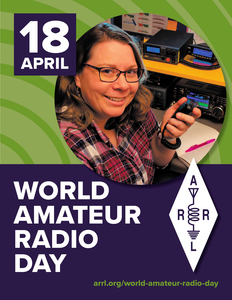
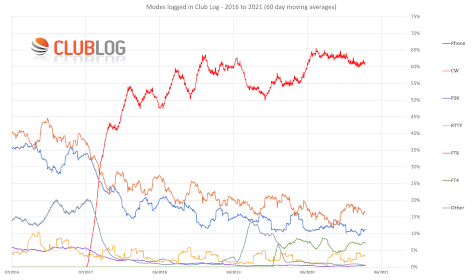
.jpg) The latest episode of the On the Air podcast (Episode 15) features an interview with propagation expert Carl Luetzelschwab, K9LA, about what to expect in the new solar cycle.
The latest episode of the On the Air podcast (Episode 15) features an interview with propagation expert Carl Luetzelschwab, K9LA, about what to expect in the new solar cycle..JPG) amateurs are, how others view amateur radio, and what amateur radio needs to do going forward.
amateurs are, how others view amateur radio, and what amateur radio needs to do going forward. experience. In this presentation, Mike, KN6EZE, covers the basics for new and experienced ham radio operators.
experience. In this presentation, Mike, KN6EZE, covers the basics for new and experienced ham radio operators.-graphic.JPG) European Commission to review the current position on the development of an emission standard for WPT-EV.
European Commission to review the current position on the development of an emission standard for WPT-EV.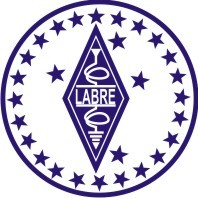 radio amateur. On February 23, LABRE wrote ANATEL commenting on a change in the necessary procedures to become a radio amateur.
radio amateur. On February 23, LABRE wrote ANATEL commenting on a change in the necessary procedures to become a radio amateur..png) Examination Certificate) or all three UK exams combined. The French HAREC exam comprises 40 questions to be completed in 45 minutes, with 15 minutes allowed for the 20 rules and regulations questions and 30 minutes for the 20 technical theory questions.
Examination Certificate) or all three UK exams combined. The French HAREC exam comprises 40 questions to be completed in 45 minutes, with 15 minutes allowed for the 20 rules and regulations questions and 30 minutes for the 20 technical theory questions..PNG) A presentation that Lance Collister, W7GJ, did for the Cherryland Amateur Radio Club in Michigan provides a live demonstration of moonbounce (EME) on 6 meters. The club program is available as a
A presentation that Lance Collister, W7GJ, did for the Cherryland Amateur Radio Club in Michigan provides a live demonstration of moonbounce (EME) on 6 meters. The club program is available as a 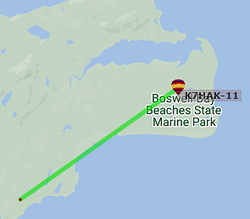 An amateur radio balloon launched by K7HAK from Yakima, Washington, is being tracked via
An amateur radio balloon launched by K7HAK from Yakima, Washington, is being tracked via 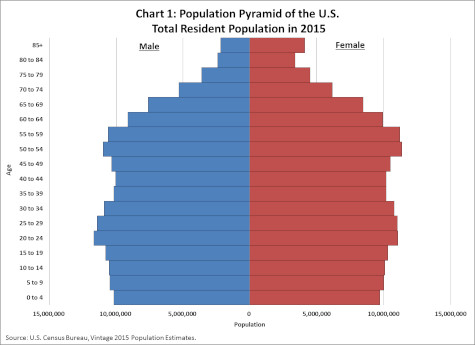
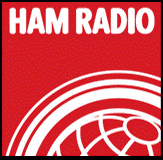 The 2021 in-person HAM RADIO exhibition in Germany has been called off. The in-person
The 2021 in-person HAM RADIO exhibition in Germany has been called off. The in-person .jpg) Several satellites operating in bands allocated to the Amateur Satellite Service went into orbit on March 22. Most have been coordinated by the International Amateur Radio Union (IARU) Satellite Frequency Coordination Panel. They include BeeSats -5, -6, -7, and -8; FEES; SMOG; GRBAlpha; KSU Cubesat; DIY-1; STECCO; CubeSX-HSE; CubeSX-Sirius-HSE; Orbicraft-Zorkiy, and NanoSatC-BR2. Operating in Amateur Satellite spectrum without IARU frequency coordination is KMSL. Additional satellites may follow. The IARU Satellite Frequency Coordination Panel has declined coordination for UNISAT-7 and WildTrackCube-Simba. It's reported that the UNISAT-7 platform has deployed DIY-1 - Arduiqube, which is coordinated.
Several satellites operating in bands allocated to the Amateur Satellite Service went into orbit on March 22. Most have been coordinated by the International Amateur Radio Union (IARU) Satellite Frequency Coordination Panel. They include BeeSats -5, -6, -7, and -8; FEES; SMOG; GRBAlpha; KSU Cubesat; DIY-1; STECCO; CubeSX-HSE; CubeSX-Sirius-HSE; Orbicraft-Zorkiy, and NanoSatC-BR2. Operating in Amateur Satellite spectrum without IARU frequency coordination is KMSL. Additional satellites may follow. The IARU Satellite Frequency Coordination Panel has declined coordination for UNISAT-7 and WildTrackCube-Simba. It's reported that the UNISAT-7 platform has deployed DIY-1 - Arduiqube, which is coordinated. .jpg) Past ARRL San Diego Section Manager (SM) and Southwest Division Vice Director Tuck Miller, NF9T (ex-NZ6T), of Danville, Illinois,
Past ARRL San Diego Section Manager (SM) and Southwest Division Vice Director Tuck Miller, NF9T (ex-NZ6T), of Danville, Illinois, 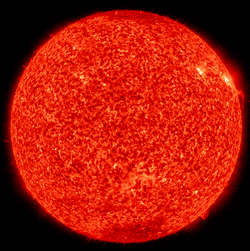 Predicted solar flux over the next month does not look promising, with values way down in the 70s. Expect the 10.7-centimeter flux at 75 on April 1; 70 on April 2 - 7; 72 on April 8; 73 on April 9 - 13; 74 on April 14 - 16; 76 on April 17 - 24; 75 on April 25 - 27, and 74, 73, and 72 on April 28 - 30.
Predicted solar flux over the next month does not look promising, with values way down in the 70s. Expect the 10.7-centimeter flux at 75 on April 1; 70 on April 2 - 7; 72 on April 8; 73 on April 9 - 13; 74 on April 14 - 16; 76 on April 17 - 24; 75 on April 25 - 27, and 74, 73, and 72 on April 28 - 30.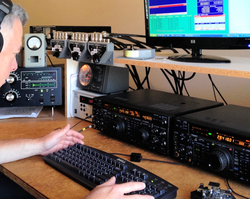 April 4 -- North American SSB Sprint Contest
April 4 -- North American SSB Sprint Contest.jpg)








